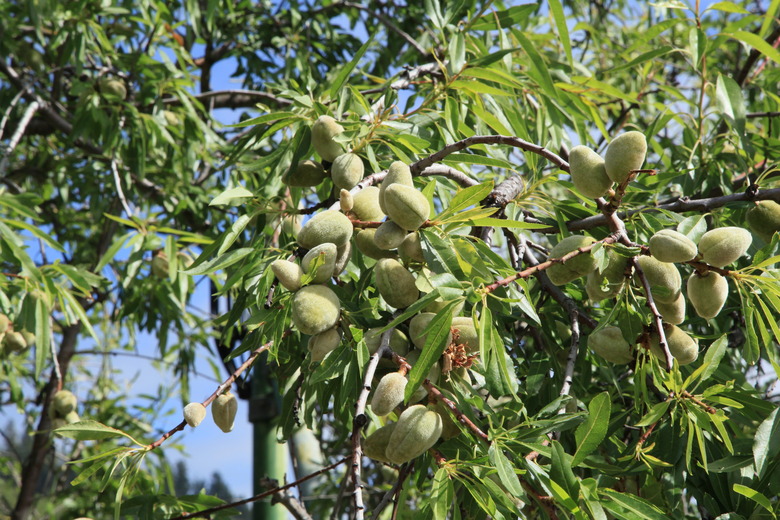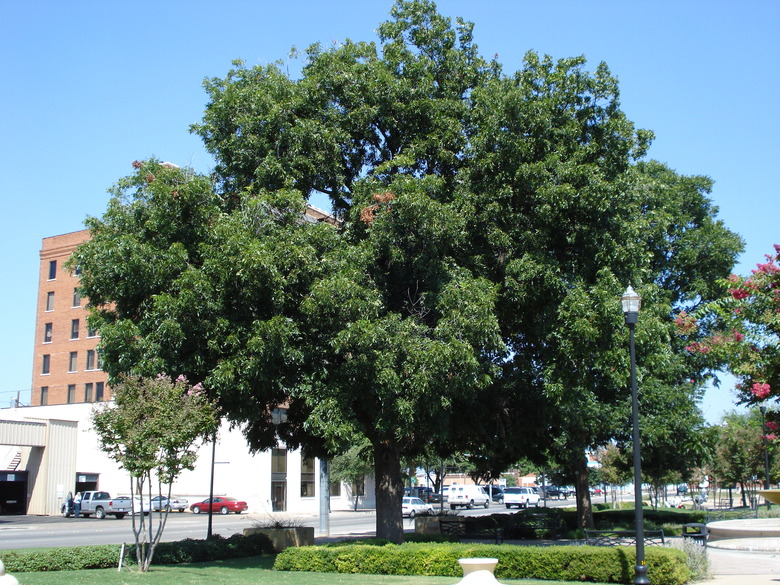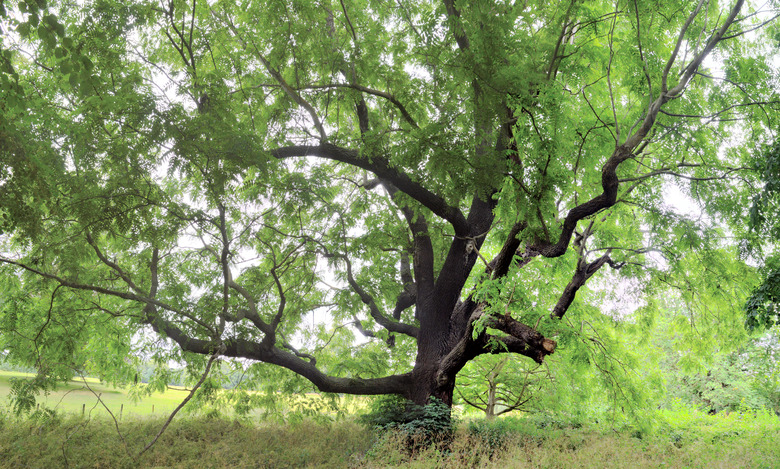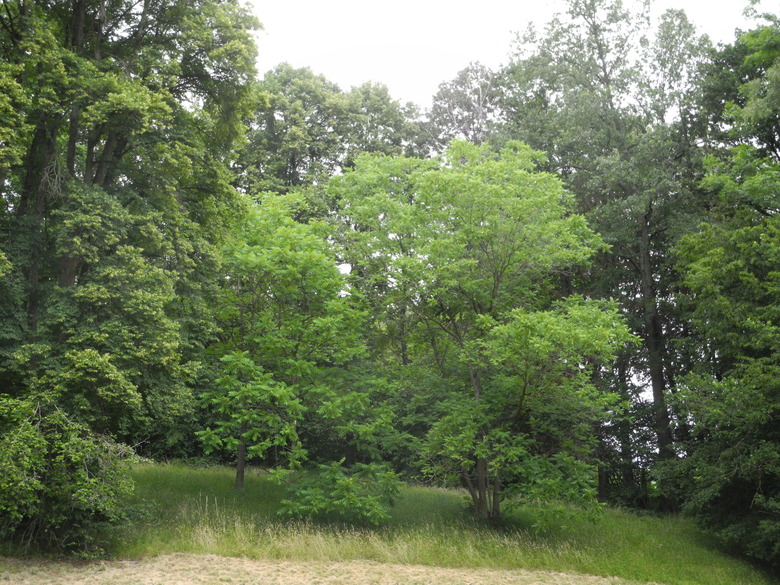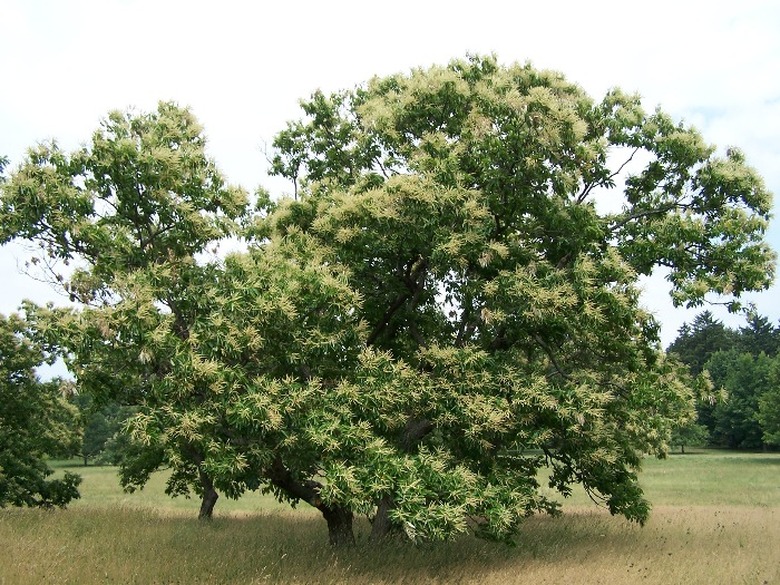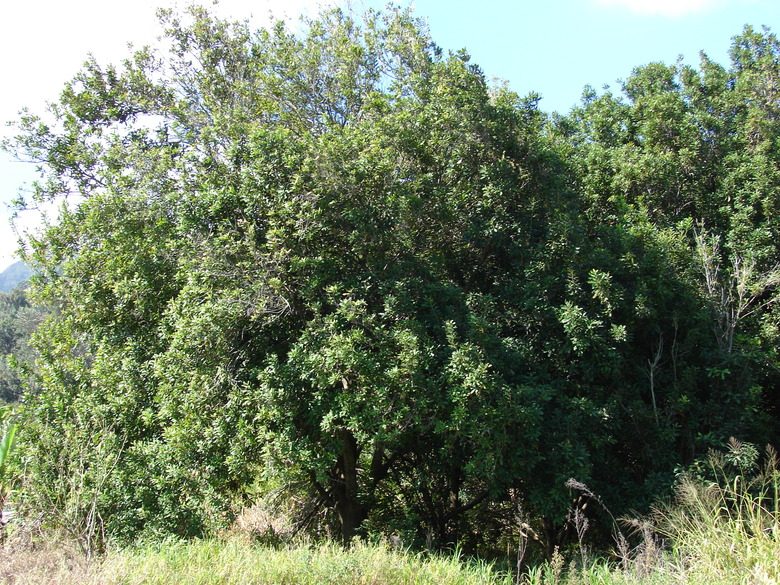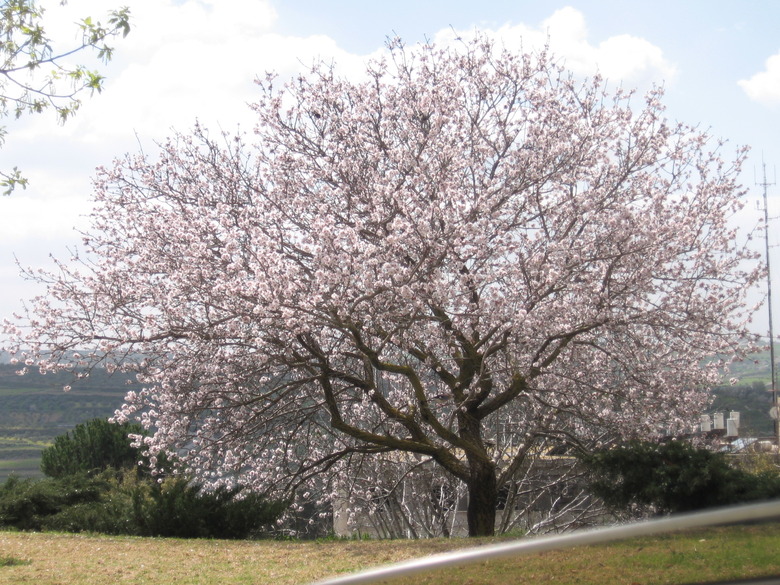Identifying Nut Trees
A number of native and nonnative nut trees are grown commercially in North America for their crops.
In order to identify these trees, you can look at the shape and size of the leaves, the flowers and the color and texture of the bark. The nuts themselves can also tell you what type of tree you are looking at.
Pecan Tree
The pecan tree (Carya illinoinensis), the range of which extends from Iowa and Indiana south to Mexico, is one of the most important nut trees in the United States.
At maturity, a pecan tree may be 75 to 100 feet tall. It produces catkins, or male flowers, and spiky female flowers in April and May. The flowers are not showy.
Pecan trees have odd-pinnate compound leaves. "Compound" means that each leaf consists of leaflets arranged along a central stem. Odd-pinnate compound leaves have a single leaflet at the tip, or terminal end, of the leaf.
According to the Missouri Botanical Garden, the leaves of the pecan tree are a medium green color, and each leaf has between 9 and 17 serrated leaflets that may be anywhere from 2 to 7 inches in length. The fruit of the pecan tree is encased in a husk that splits in four; then, it is ready to harvest.
Black Walnut Tree
Native to the U.S., the black walnut tree (Juglans nigra) is another commercially valuable nut tree because of its timber and its fruit. Growing other plants around it can be tricky though, as this species produces a toxin that kills sensitive plants.
A mature black walnut tree has a height around 75 feet and a low, round, wide crown. It flowers in May and June.
Like pecan trees, black walnut trees have odd-pinnate compound leaves. According to the Arbor Day Foundation, each black nut tree leaf is 1 to 2 feet long and has between 15 and 23 leaflets, each with a length between 2 and 5 inches. Each leaflet has finely serrated edges.
Black walnut tree identification in winter, when the leaves are gone, may involve analyzing the bark, says the Michigan State University Extension. Black walnut trees usually have dark gray furrowed bark with a diamond pattern.
Butternut Walnut Tree
Trees that look like black walnut trees include the butternut tree (Juglans cinerea), which is smaller with a height between 40 and 60 feet. According to the Missouri Botanical Garden, the butternut tree also has a smaller number of leaflets per leaf than the black walnut tree.
Walnut tree identification by bark is another option. The bark of the butternut walnut tree also has fewer ridges, or fissures, than the black walnut tree. The walnuts produced by this species are also more oval-shaped compared to the round fruit of the black walnut tree.
American Chestnut Tree
The American chestnut (Castanea dentata) was once an abundant tree in the eastern U.S., though it is now mostly extinct in the wild. The tree has toothed and oblong-lanceolate leaves, which means they are oblong-shaped with a tapered end. The Missouri Botanical Garden describes the color of American chestnut trees as dull green.
The catkins of this tree are covered in light yellow flowers and appear in June. Female flowers also grow as catkins, though they are less noticeable. The fruit of the American chestnut is found inside a burr 2 or 3 inches wide that is covered in spines.
Macadamia Nut Tree
Native to the rain forests of Australia, the macadamia nut tree (Macadamia integrifolia) is a broadleaf evergreen tree with a height between 30 and 50 feet. It is only hardy in U.S. Department of Agriculture zones 9 to 11.
In the U.S., it is grown commercially in Hawaii, where the climate is suitable for the species. The macadamia nut tree has glossy, oblong-shaped leaves with a length between 8 and 10 inches. This tree is a seasonal bloomer that produces fragrant white flowers, according to the Missouri Botanical Garden.
Almond Nut Tree
The almond tree (Prunus dulcis) is native to western Asia and northern Africa. However, it is grown all over the world, including the U.S., where the state of California is the primary producer of almonds.
The almond tree is hardy in U.S. Department of Agriculture plant hardiness zones 7 to 9 and is a small tree with a height between 10 and 15 feet per the Missouri Botanical Garden.
This tree blooms in March. Its flowers have five petals each and may be pink or white in color. The green, lanceolate leaves of this tree are about 5 inches long and lighten to a yellow-green in autumn.
References
- Michigan State University Extension: Wintertime Identification of Black Walnut
- Missouri Botanical Garden: Carya illinoinensis
- Missouri Botanical Garden: Macadamia integrifolia
- Missouri Botanical Garden: Juglans cinerea
- Missouri Botanical Garden: Castanea dentata
- Missouri Botanical Garden: Prunus dulcis
